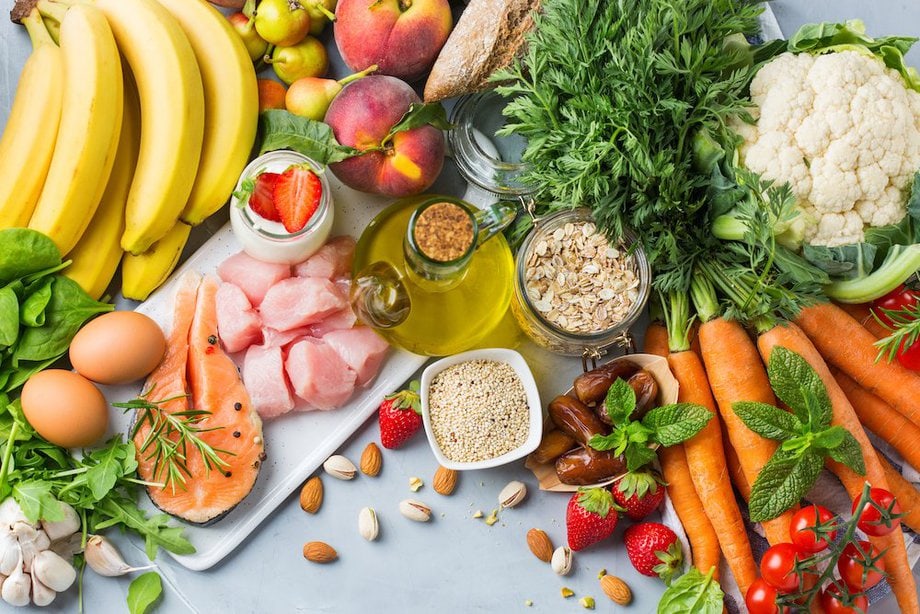How To Choose Low-Sodium Foods For Hypertension Management?

This article aims to provide guidance on selecting low-sodium foods for the management of hypertension.
Hypertension, or high blood pressure, is a common chronic condition that can lead to serious health complications. One effective approach for managing hypertension is reducing sodium intake, as excessive sodium consumption is known to contribute to elevated blood pressure levels.
This article offers a comprehensive overview of strategies for choosing low-sodium foods. It emphasizes the importance of understanding the significance of sodium reduction, reading food labels attentively, opting for fresh and whole foods, utilizing herbs and spices for flavor, limiting processed and packaged foods, being aware of hidden sources of sodium, seeking low-sodium alternatives, and considering professional guidance and support.
By following these recommendations, individuals can make informed choices to reduce their sodium intake and support their hypertension management efforts.
Key Takeaways
- Sodium reduction is an effective approach to manage hypertension and reduce cardiovascular risks.
- Reading food labels and checking for hidden sources of sodium is crucial in monitoring sodium intake.
- Fresh and whole foods, such as fruits and vegetables, are low in sodium and beneficial for cardiovascular health.
- Limiting processed and packaged foods, choosing low-sodium condiments, and using sodium-free seasoning blends can enhance dietary choices and promote better health.
Understand the Importance of Sodium Reduction
Understanding the significance of reducing sodium intake is crucial for managing hypertension effectively. Sodium reduction offers numerous benefits in the management of hypertension.
Firstly, reducing sodium intake helps lower blood pressure levels, reducing the strain on the cardiovascular system. This in turn decreases the risk of heart disease, stroke, and other cardiovascular complications associated with hypertension.
Secondly, a low-sodium diet promotes better kidney function, preventing fluid retention and reducing the workload on the kidneys. Moreover, it aids in maintaining a healthy weight, as high sodium intake is often linked to obesity.
On the other hand, high sodium intake poses health risks such as increased blood pressure, fluid retention, and damage to blood vessels and organs.
Therefore, understanding the importance of sodium reduction is essential for individuals with hypertension to effectively manage their condition and prevent associated health risks.
Read Food Labels Carefully
When examining food labels for nutritional information, it is crucial to carefully scrutinize the contents in order to make informed decisions regarding sodium intake for individuals with high blood pressure. Understanding the sodium content of a food product is essential for managing hypertension. Food labels provide valuable information about the amount of sodium present in a serving size, enabling individuals to monitor their sodium intake effectively.
Additionally, it is important to check the ingredient list on food labels. Sodium can be hidden under various names, such as monosodium glutamate (MSG), sodium nitrate, or sodium bicarbonate. By familiarizing oneself with these different names, individuals can identify hidden sources of sodium and make appropriate choices to reduce their sodium consumption.
Therefore, reading food labels carefully and understanding the sodium content and ingredient list is crucial for individuals with high blood pressure.
Choose Fresh and Whole Foods
By opting for fresh and whole foods, individuals can enhance their dietary choices and prioritize their cardiovascular health. Fresh produce, such as fruits and vegetables, is a key component of a low-sodium diet. These foods are naturally low in sodium and rich in essential nutrients, including potassium, which can help lower blood pressure.
Incorporating a variety of fresh produce into daily meals can contribute to a well-balanced and heart-healthy diet. Additionally, meal planning is essential when choosing low-sodium foods. Planning meals ahead of time allows individuals to carefully select ingredients and control the amount of sodium added during cooking. This proactive approach helps reduce reliance on processed and packaged foods, which are often high in sodium.
Overall, choosing fresh and whole foods, combined with effective meal planning, is an effective strategy for managing hypertension.
Use Herbs and Spices for Flavor
Incorporating a wide range of herbs and spices into meals adds depth and complexity to the flavors, making it easier to reduce the reliance on high-sodium condiments and seasonings.
Herbs and spices can serve as flavorful alternatives to sodium-laden seasonings, allowing individuals to enhance the taste of their food while keeping their sodium intake in check.
By using herbs such as basil, oregano, thyme, and rosemary, individuals can add a burst of flavor to their dishes without increasing sodium levels.
Spices like cinnamon, turmeric, cumin, and ginger can also be used to create robust and satisfying flavors.
Experimenting with different combinations and proportions of herbs and spices can help individuals discover new and exciting flavor profiles that do not rely heavily on sodium.
Incorporating these alternative low sodium seasonings into daily cooking can be a beneficial strategy for managing hypertension.
Limit Processed and Packaged Foods
Limiting the consumption of processed and packaged foods can be an effective strategy to reduce sodium intake and promote overall health. Processed and packaged foods tend to be high in sodium due to the addition of salt and other sodium-based additives for flavor and preservation purposes.
By opting for homemade meals, individuals have greater control over the ingredients used and can choose low-sodium alternatives. Additionally, it is important to pay attention to the sodium content in condiments, as they can contribute significant amounts of sodium to a meal.
Opting for low-sodium versions or using alternatives such as herbs and spices can help to reduce sodium intake further. Ultimately, limiting processed and packaged foods and being mindful of the sodium content in condiments can contribute to a lower sodium diet and aid in hypertension management.
Be Mindful of Hidden Sodium Sources
Being aware of hidden sources of sodium is crucial for maintaining a healthy diet and reducing sodium intake. While it is important to limit processed and packaged foods, there are other hidden sodium risks that individuals with hypertension should be mindful of.
One major source of hidden sodium is condiments. These flavor enhancers may seem harmless, but they can contain high amounts of sodium. It is advisable to read food labels carefully and choose low-sodium or sodium-free condiments whenever possible. Additionally, some condiments, such as soy sauce, Worcestershire sauce, and salad dressings, can be particularly sodium-rich.
Being mindful of these hidden sources of sodium can help individuals with hypertension make healthier choices and effectively manage their condition.
- Check food labels for sodium content
- Opt for low-sodium or sodium-free condiments
- Be cautious of soy sauce, Worcestershire sauce, and salad dressings
Opt for Low-Sodium Alternatives
By selecting alternative options that are lower in sodium, individuals can effectively enhance their dietary choices and promote better overall health.
One way to do this is by opting for low-sodium condiments. Many condiments, such as ketchup, mustard, and soy sauce, can be high in sodium, which can contribute to hypertension. However, there are low-sodium versions of these condiments available in the market. These alternatives provide the same taste and flavor but with reduced sodium content.
Additionally, individuals can also consider using sodium-free seasoning blends. These blends are made from a combination of herbs, spices, and other flavorings, providing a flavorful alternative to high-sodium seasonings.
By incorporating these low-sodium condiments and sodium-free seasoning blends into their diet, individuals can enjoy their favorite foods while managing their hypertension effectively.
Seek Professional Guidance and Support
Seeking professional guidance and support from healthcare professionals can provide individuals with valuable insights and strategies to effectively manage and control their hypertension. Healthcare professionals, such as doctors, dietitians, and nutritionists, have the knowledge and expertise to provide evidence-based advice on low-sodium food choices for hypertension management. They can recommend specific low-sodium alternatives and help individuals understand how to read food labels to identify hidden sources of sodium.
Moreover, healthcare professionals can create personalized meal plans tailored to an individual’s specific dietary needs and preferences while considering their overall health status.
In addition to professional advice, building a support network can also be beneficial. Connecting with others who are also managing hypertension can provide emotional support, encouragement, and practical tips for choosing low-sodium foods. Online communities, support groups, and counseling services can offer valuable resources for individuals seeking assistance in their journey towards hypertension management.
Frequently Asked Questions
What are the recommended daily sodium intake levels for individuals with hypertension?
The recommended daily sodium intake levels for individuals with hypertension are typically limited to 1500-2300 mg per day, according to sodium intake guidelines. These guidelines aim to manage hypertension and reduce the risk of associated complications.
Can I still enjoy salty snacks and condiments while following a low-sodium diet?
Incorporating healthy condiments and choosing alternatives to salty snacks can be enjoyable while following a low-sodium diet. Opt for low-sodium options, such as herbs and spices, vinegar-based dressings, and unsalted nuts, to satisfy cravings and add flavor to your meals.
Are there any specific herbs and spices that are particularly beneficial for enhancing the flavor of low-sodium meals?
Using herbs and spices in cooking provides numerous benefits for flavor enhancement, serving as alternatives to salt. They add depth, complexity, and aroma to low-sodium meals, making them more enjoyable and satisfying without compromising health.
How can I effectively reduce sodium intake when dining out at restaurants?
Tips for choosing low sodium options when dining out include reviewing restaurant menus ahead of time, asking for modifications or substitutions, avoiding high-sodium ingredients like sauces and dressings, opting for grilled or steamed dishes, and requesting salt to be removed or limited.
Is it necessary to completely eliminate processed and packaged foods from my diet, or can I still consume them in moderation?
It is not necessary to completely eliminate processed and packaged foods from the diet. However, it is important to consume them in moderation and opt for low sodium alternatives to manage hypertension.









